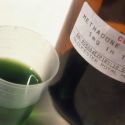Retreat Offers Hope for Indian American Women Alcoholics
Indian American women who are struggling with alcohol dependence, depression or substance abuse face unique challenges, according to a team of recovery professionals who are targeting the community.
“Living here in the U.S. is a very major stress,” Arun Jethanandani, M.D., told India-West by phone from the Brookhaven Retreat in eastern Tennessee. “Many women have not acclimatized to a different culture here.”
That’s why Jethanandani and the Brookhaven Retreat have started a special outreach program to South Asian women in the United States who may wonder if they have a drinking problem but want culturally sensitive surroundings and treatment that other private treatment facilities, or Alcoholics Anonymous, may not offer.
“Women with substance abuse or alcohol problems may even be shunned, or kept closed off,” said Khairunissa Jhooma, a nurse of South Asian descent who was born in Maharashtra and grew up in Dubai, and now works at Brookhaven.
“Honor is very important to [South] Asian women. Often, their families will not accept such a disorder, and the women may feel huge shame and guilt. When they come here, one of the first barriers we break is that of language and culture,” said Jhooma, who speaks Gujarati and Kutchi. Jethanandani speaks Hindi and Punjabi.
In the book “Ethnocultural Factors in Substance Abuse Treatment,” Shulamith Lala Ashenberg Straussner observes that 99.6 percent of Indians who abuse alcohol are men, but that all Indians who emigrate to other countries become more likely to become dependent on alcohol or other substances. This is due to the stress of acculturation; loneliness and homesickness; easy access to drugs and alcohol, and financial feasibility; combined with freedom from India’s cultural restrictions and taboos. “The gender gap between second-generation Indian American men and women is also closing,” she writes.
But Indian Americans who abuse alcohol, of either gender, are less likely than other immigrant communities to enter treatment programs, Straussner found.
The Brookhaven Retreat, which is nestled in the Great Smoky Mountains, is a privately owned rehabilitation center that offers luxury accommodation along with complete medical care and a comprehensive bouquet of complementary therapies addressing alcoholism, substance abuse, emotional disorders and suicide prevention.
Brookhaven only treats women, said its founder, Jacqueline Dawes. “We help women to become more centered, to know who they are, and to regain wholeness,” Dawes told India-West.
At Brookhaven, alcoholics are evaluated for depression and other problems as well. “Substance abuse can co-occur with depression, trauma or eating disorders,” said Dawes.
Eighty-five percent of Brookhaven’s 500-plus clients remain sober or abstinent, “or have retained mental stability,” said Dawes. After they leave the retreat, they must phone in every Monday night; and the retreat hosts an annual retreat each January.
But unlike Alcoholics Anonymous, Narcotics Anonymous or Overeaters Anonymous, Brookhaven is not free; a stay there may cost more than $20,000, and the center does not handle insurance claims. In addition, Brookhaven does not offer discounts to low-income clients.
“We have made a lot of concessions in the past,” she said, “but we found that without a financial commitment, the clients didn’t do as well. They took it for granted, or got disruptive.”
But clients willing and able to pay Brookhaven’s fee, who “feel the wallet pain,” said Dawes, “don’t want to pay again. They want to get every penny out of the program.”
The 12-Steps to recovery, as used by AA, are only a part of the program at Brookhaven. Dawes rejects Alcoholics Anonymous’s second step, which states: “We came to believe that a power greater than ourselves could restore us to sanity.”
“We promote spirituality,” she said, but added that she feels some people might perceive AA’s second step as having “a Christian basis” (For the record, AA is not Christian; its Big Book is emphatic that the alcoholic seek out a concept of “God as we understand him”).
“Some of our clients have tried 12-Step programs,” Dawes continued. “We’re dedicated to finding a modality that works for them. My number one concern is results.”
Straussner notes that Indian Americans are now turning to substance abuse treatment centers in greater numbers, and the author stresses that abstinence-based models (such as that used in 12-Step programs such as Alcoholics Anonymous) were found to be most effective.
But Indian American families may not be as supportive of the alcoholic’s recovery as other ethnic groups, Straussberg found. This may be partly because they are not willing to attend Al-Anon (a program for the families of alcoholics) due to their own fears of shaming the family — though it should be mentioned that both Alcoholics Anonymous and Al-Anon adhere to strict principles of anonymity.
Because the families don’t fully understand alcoholism, they may mistakenly think that it’s merely a problem of will-power, or that the alcoholic surely should be able to take “just one drink.”
For years, studies had tracked alcohol abuse within the Asian and Pacific Islander communities though no separate research had been compiled specifically about Indian Americans. But this is starting to change, with the publication of Straussner’s book as well as a 2007 study at Cornell University.
The Cornell study, by Nausheen Rokerya, studied college students and found that the taboo against drinking by Indian American parents simply made it more attractive. “It is taboo, and therefore is rarely explicitly discussed, but when it does come up, it’s characterized as something ‘we’ don’t do. Drinking is for ‘them,’” writes Rokerya. Another influence discussed in the study stemmed from a parental expectation of academic responsibility; for many Indian American parents, drinking is perceived as an unnecessary diversion from coursework.
A University of Maryland study of 76 Indian Americans had another interesting finding, which was that second-generation Indian Americans experienced far more perceived discrimination than their first-generation counterparts, which the study’s creator, Radha Gholkar, saw as a high risk for alcohol abuse.
The Substance Abuse and Mental Health Administration’s National Household Survey on Drug Abuse in 2002 found that the prevalence rates of alcohol and illicit drug use are low in Indian Americans as compared to other Asian-American groups and non-Asian groups. But these findings are being debated, because the stigma surrounding alcoholism may lead Indian Americans not to report it.
But alcoholism is a deadly and progressive disease, and deserves one’s full dedication and attention. To recovering alcoholics in AA, that means surrender to a higher power, and an admission of personal powerlessness. AA’s first step reads: “We admitted that we were powerless over alcohol and that our lives had become unmanageable.”
Jethanandani, for her part, had an insight on AA’s first step in an Indian cultural context. “I’m very used to powerless, dependent women in India,” she told India-West. “But they are not powerless. I won’t let them believe that. They’re just not used to using their power.”
source: India-West

